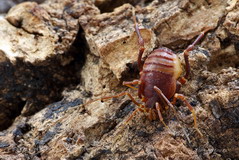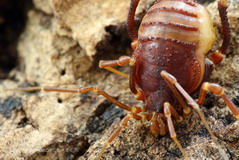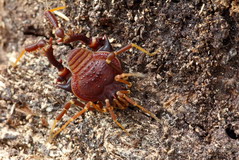- Cyphophthalmi
- Eupnoi
- Dyspnoi
- Laniatores
- Grassatores
- Gonyleptoidea
- Gonyleptidae
- Opilionesincertae

Metagyndes innata (Roewer, 1929)
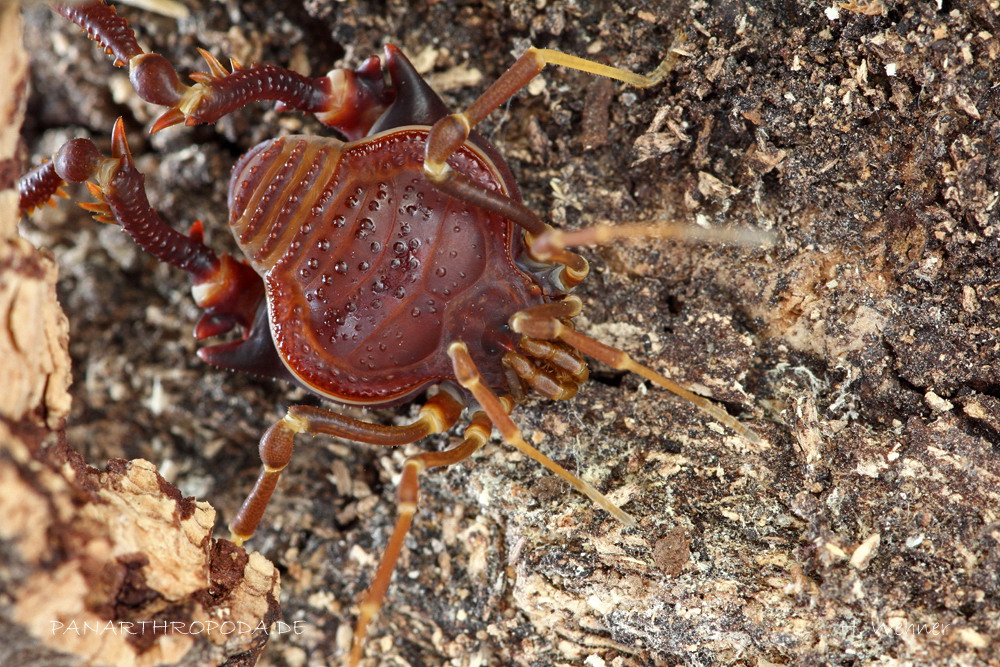
Adult male
Preface
For some time now harvestmen named Metagyndes innata or Metagyndes chilensis are being imported from Chile. It is safe to assume that these animals belong to the suborder Laniatores. Since a proper identification is not possible in my case I wil call them Metagyndes innata in this caresheet.
Origin and occurrence
The here introduced species is supposed to originate from Chile. Severel families of Laniatores occur in South America. Harvestmen belonging to this suborder are characterized by their appearance, that is not familiar to people from temperate zones of the northern hemisphere due to the huge contrast of the heavily thorned and colorful Laniatores in comparison to the fragile looking and long legged species europeans are used to.
Appearance and sexual dimorphism
These animals measure a total of about 1 cm in bodylength. Their color is dark red, the thorns are colored from a dark brown to black.
The species exhibits a strong sexual dimorphism. The forth pair of legs of the male is thickened and heavily thorned. In males the single thorned coxa of the fourth pair of legs is visible in dorsal view, in females the coxa (only exhibiting a very small thorn) is more hidden by the scutum of the ophistosoma.
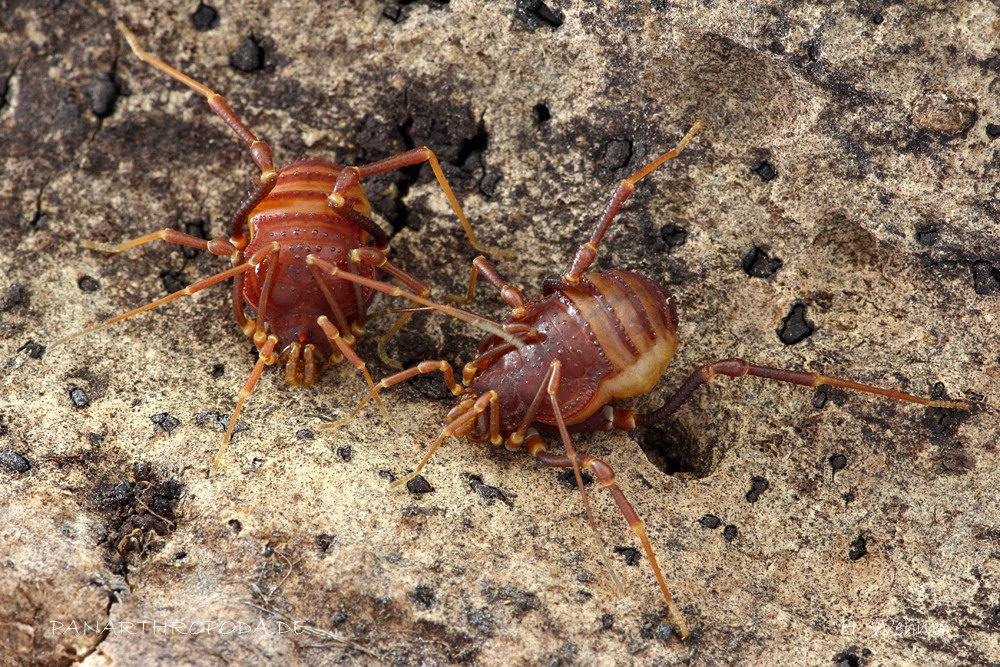
Adult females
Behavior
These animals are social and live in groups. Often they sit close to each other under a single hideout.
Compared to other arachnids Metagyndes innata is slow moving and the second pair of legs is used to key the surroundings like antennae. They are nocturnal and leave their hideouts at dusk on the search for food which consists of living prey, carrion and even vegetarian food.
Exposed to light they move around aggrivated in search of a dark hideout.
It can be assumed that the males of this species have territorial behavior and each male claims a certain territory and several females.
I have found dead males on several occasions which could be based on the territorial fights and resulting stress. However, this is still a hypothesis since I was unable to observe any fights. But in any case the thorns on the males support the theory of this behavior that is known in many Laniatores.
Keeping conditions
I have kept Metagyndes innata under several different conditions all of which resulted in the females depositing eggs.
At the moment I am keeping them at 15-18°C during winter and 20-22°C during summer. Keeping them at 10-15°C for half a year seemed to be no problem either.
The containers are filled with humus that is kept moist all the time and is filled with springtails. A good airflow is essential to prevent mold from growing.
Several pieces of cork serve as totally dark hideouts. I have kept over 20 specimen in a container measuring 20 cm x 35 cm x 20 cm without any problems at all.
The animals are fed with freshly killed crickets (that can surpass the size of the harvestmen) once a week. Living crickets can be fed, too. However, they should not be too fast or too energetic since Metagyndes innata will not catch those prey items. Cooked carrot is beeing fed, too. I could not make out a positive effect of the vegetarien diet.
Mating and raising the young
The ovipositor of the Laniatores is short and therefore not fit to deposit eggs inside the ground so females will often protect their clutch (and in some species males, too).
In contrast to the common belief that the breeding of these animals is very difficult or even impossible, I can not confirm these experiences.
Kept under the above mentioned conditions the females will lay 10 to 20 eggs each year from november to december. These will be protected by the female which will not leave them under normal conditions. When a female is scared off, it will return to the clutch soon after. The eggs will be layed on the backside of the cork and never on the ground itself.
In the beginning the eggs are of a light brown color and change color short before hatching to a silvery gray. After hatching the young will be close to the mother for several days.
The young are colored in a dark gray and are thornless. After each molt the young start to resemble the adults more and more. Subadult specimen are colored in a bluish gray.
The young are fed with freshly killed crickets but I suppose that freshly hatched young feed on springtails, too.
The upbringing of the animals can be done in groups with or without adult specimen. Only little young managed to survived to the adult stage, however I could not observe whether this was due to cannibalism or the young were just eaten after dying naturally. I suspect thet when brought up with adult specimen in the same container hideouts that can not be reached by adults would be a big help.
I was able to observe that in subadult state the young grouped up with the adults.
In 4 to 5 months time, the freshly hatched young were adult.
Peculiarities
When touched the animals release a midly nauseating scent. I could not make out any actual secretion of fluid though.
F. Schramm, authored 2011
